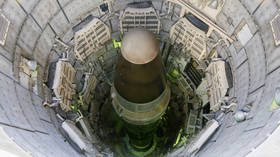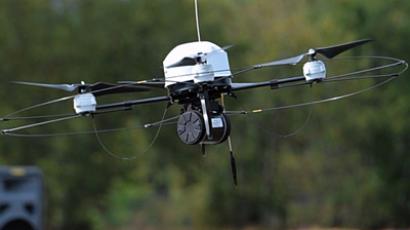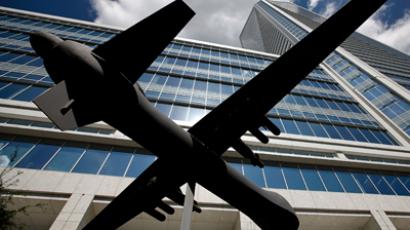FAA proposes widespread civilian drone use in US airspace by 2015
US authorities have presented a plan for the mass use of drones in American airspace. Though there have been few objections to the move so far, a global government surveillance drone program is likely to raise privacy concerns later on.
The US Federal Aviation Administration (FAA) has presented a detailed plan for drones to roam across American skies within the next two years.
The plan sets September 2015 as a deadline for integrating UAVs into US airspace, and six possible drone test sites will be selected out of 26 proposed ones by the end of 2013.
The move has been continuously lobbied by the trade group Aerospace Industries Association, which expects great demand for civilian-use drones, including for agriculture, firefighting, weather forecast and tracking wildlife.
Within the next five years, after appropriate regulations are introduced, whole 7,500 small UAVs will be operating in US airspace, FAA Administrator Michael Huerta said at an aerospace news conference in Washington on Thursday.
Huerta outlined the ultimate goal of the American drone industry: global leadership that could enable the US to set standards for the industry worldwide.
"We recognize that the expanding use of unmanned aircraft presents great opportunities, but it's also true that integrating these aircraft presents significant challenges," Reuters quoted Huerta as saying. He added that US aviation regulations and safety rules would remain a “gold standard” for the rest of the world “to maintain our position of global leadership.”
“We have operational goals and safety issues we need to
consider as we expand the use of unmanned aircraft,” Huerta
said.
At the same news conference, AIA President Marion Blakey promised that UAVs would bring an “enormity of benefits” to American society and that unmanned aircraft represent “America's next great aviation frontier.”
According to industry forecaster Teal Group, the estimated $6.6 billion spent worldwide on drone research and development in 2013 will grow to $11.4 billion in 2022, AP reported.
True beneficiaries of drones used in America
The move to use drones widely inside the US had been long
expected after drones were introduced into the US Army.
Drones have some clear advantages over fixed surveillance cameras on lampposts and at other locations, as they require the video streams from CCTVs to be processed. For instance, drones can always be focused on the desired objects at the operators’ will at any given time, and drones are cost-effective mobile tools in America’s vast low-rise suburbia.
The FAA previously claimed it has no interest in letting weaponized
UAVs, like the missile-equipped Predator, into US airspace
anytime soon.
So far nobody is talking about armed UAVs prowling US city skylines, but officials’ ideas about drone data retention has alarmed privacy advocates in the country.
Huerta shared some interesting statistics on who is using drones in the US the most. He mentioned that apart from synoptics, environmental specialists and educational institutions, there are about 80 law enforcement agencies that operate small size surveillance drones, with the FAA granting each of them public use waivers on a case-by-case basis.
“If we’re going to take full advantage of the benefits that we’re talking about from these technologies, we need to be responsive to public concerns about privacy,” Huerta said.
Reportedly, not only the FAA, but also Pentagon, the Department of Homeland Security (DHS) and the Department of justice are taking part in a multi-agency group that has also released a comprehensive plan accelerating integration of UAVs into US national airspace. All data gathered by the six test sites will go straight to that interagency group, Huerta said.
The test drone sites will have to comply with federal and state privacy laws, account for collected data and present annual reviews on privacy practices, Huerta said.
“It's crucial that as we move forward with drone use, those
procedural protections are followed by concrete restrictions on
how data from drones can be used and how long it can be
stored,” said Christopher Calabrese, legislative counsel for
the American Civil Liberties Union.














